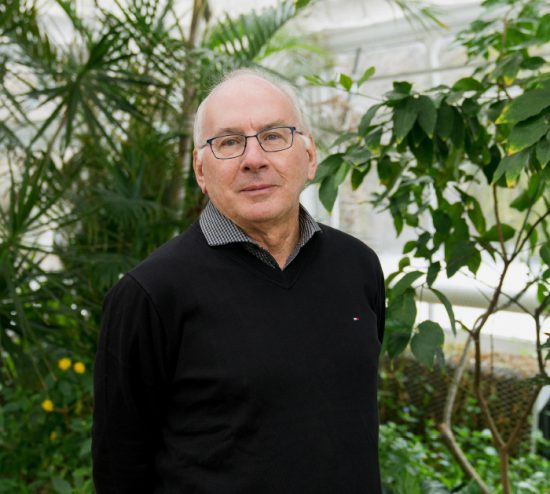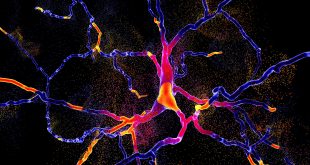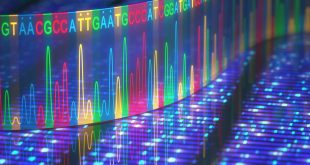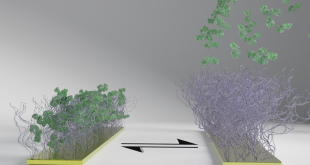By Jana Manolakos
Perched on the deck of the HMS Beagle off the west coast of Ecuador in the fall of 1835, Charles Darwin, sketchbook in hand, ruminated over differences among similar species. His subsequent ideas about natural selection, generated after years of observations and punctuated by heated debates among Victorian-era scientists, led to the theory of evolution.
Flash forward to today. At the University of Guelph, Prof. Paul Hebert and his colleagues have revolutionized the way we look at life on this planet beyond anything Darwin could have imagined. Under his leadership, the group has shown that sequence variation in a short segment of a standard gene can reliably distinguish species. Dubbed “DNA barcoding”, the method won him this year’s prestigious Dr. A.H. Heineken Prize for Environmental Sciences from the Royal Netherlands Academy of Arts and Science, “for his pivotal contribution to developing a genetic barcode capable of classifying every biological species on Earth”.
And if Hebert, a molecular biologist, has his way, researchers will have provided DNA barcodes for all of the estimated 10 to 20 million species on our planet by 2045. We caught up with Hebert, Director of the University of Guelph’s Centre for Biodiversity Genomics, and professor in its Department of Integrative Biology. He is also a Fellow of the Royal Society of Canada and an Officer of the Order of Canada. He holds the Canada Research Chair in Molecular Biodiversity and is Scientific Director of the International Barcode of Life (iBOL) project in which researchers from 25 countries are assigning DNA barcodes to millions of specimens.
Why was it important to receive the Dr. A.H. Heineken Prize for Environmental Science?
When one has pursued an idea for two decades, it is nice to receive recognition that it is leading somewhere interesting, especially since DNA barcoding was born in fire. The early years were turbulent, with its validity as a standardized tool hotly contested by some members of the scientific community, so it is gratifying the world has now embraced this concept. The selection panel recognized the revolutionary aspect of DNA barcoding and acknowledged that our past work has laid the foundation for a major advance in biodiversity science.
What does this recognition mean to life on Earth?
The work we are doing is critically important to the planet. We are living in a time when the number of humans is exploding. There are now more than seven billion of us and this count will rise to 9.6 billion by 2050, putting pressure on the environment as society strives to meet their needs. The ways in which we produce food and how we extract other resources from the environment to support humanity are critical issues from a biodiversity perspective.
For example, we need to find ways to reduce the impacts of agriculture on ecosystems. Around the world, agriculture is depleting wild spaces, creating a huge risk to biodiversity. For example, over the last 30 years, the insect populations in Europe have collapsed by 70 per cent. Here in Canada, migratory birds are returning in greatly diminished numbers and this, in turn, has a negative effect on the ecosystem.
How can DNA barcoding mitigate these potentially catastrophic environmental issues?
Our work will make it possible to monitor global ecosystem functions like food webs. Once the DNA barcode of a species is registered, we can easily track its numbers and detect shifts in its distribution through our bio-surveillance stations, allowing action to be taken. Like the monitoring programs that first recorded the depletion of ozone in our atmosphere and the weather stations that warned us of global warming, our biodiversity tracking system will allow humanity to monitor ecosystem functions. It is important information that will help incentivize humans to do a better job in protecting the environment. If we don’t do something, humanity’s population growth will potentially result in a mass extinction similar in scale to that which led to the loss of dinosaurs and many other organisms some 65 million years ago.

You were instrumental in launching the International Barcode of Life (iBOL) project in 2010, a global network of researchers, supported by a number of international organizations in Africa, North and South America, Europe, and Asia. Can you tell me more about the work that the Canadian team in iBOL is leading?
We are working toward the deployment of biodiversity monitoring stations in all 15 Canadian ecoregions, beginning this year with the Mixedwood Plains region that extends through the densely populated areas from Windsor to Montreal. Next year, we will tackle the Boreal Shield and the following year, the Prairies. Our monitoring stations don’t have a large footprint and apply passive collection methods to gather large numbers of invertebrate specimens from the soil and air. We currently have about 150 stations deployed in Canada and many more stations in other nations, including 25 in South Africa’s Kruger National Park, one of the most important reserves on our planet.
This DNA-based approach will allow us to track species distributions with a precision that was previously impossible. By 2025, we hope to move from monitoring one ecoregion at a time to activating a permanent biosurveillance system, as part of the science infrastructure of Canada.
iBOL has two distinct phases. We finished the first stage in 2015, completing the classification of 500,000 species over a five-year period. We then spent two years identifying new, more economical analytical protocols, and this July we will launch iBOL-II which will conclude in 2025 with the classification of 1.5 million species. This work will catalyze an even bigger project in 2026; the Planetary Biodiversity Mission will complete the inventory of all species and launch a global bio-surveillance system by 2045. This is a one-time mission and Canada has the opportunity to show the way – to be recognized as a world leader in the digital transformation of biodiversity science.
Reading life on a planetary scale will need significant funding. Can you comment?
Canada has invested several hundred million dollars into major international research programs like CERN’s Large Hadron Collider and the world’s largest telescope in Hawaii, projects that are probing atomic structures and the outer reaches of our universe. Without a doubt, these are important initiatives, but they are not as time-sensitive nor do they touch our lives as much as biodiversity. We are living on a planet that is at risk of losing a third of its species by the end of this century. There is a critical need to invest in a Planetary Biodiversity Mission to avert this loss, and it’s the chance for Canada to lead a project rather than simply join one led by other nations.
How has your work touched your personal life?
The greatest satisfaction has been being able to pursue biodiversity on a grand scale – something that has been my passion since I was a kid – and finding an approach that will help to ensure its protection. This weekend, I’ll be taking my wonderful four-year-old grandson into the woods in search of nature. In years to come, I envision him taking his children into the forests to explore biodiversity. Like Charles Darwin, they’ll be able to touch, see, and hear the biodiversity around them, but they will also have a new capability – they will be bio-literate. Simply with a tap of their communication device, they will immediately be able to access all of the knowledge that humanity has acquired about every species they encounter.
 BioLab Business Magazine Together, we reach farther into the Canadian Science community
BioLab Business Magazine Together, we reach farther into the Canadian Science community





